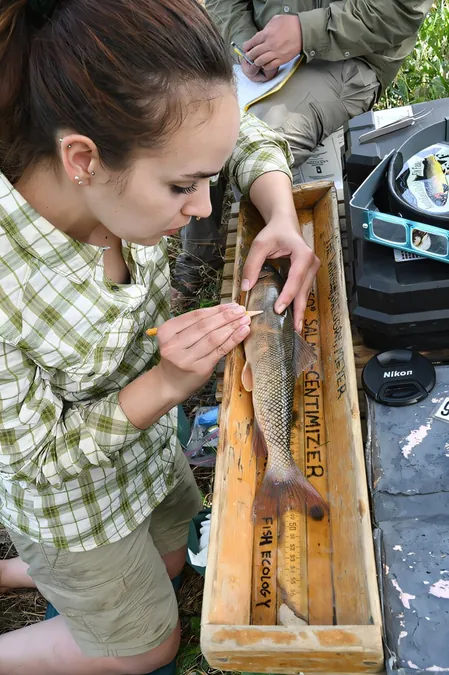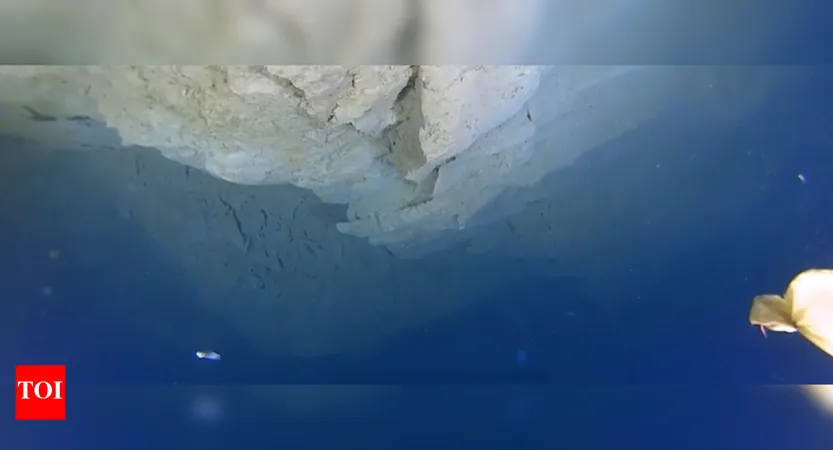
Unmasking Suckers: New Methods Reveal Hidden Fish Species in the Intermountain West
2025-07-28
Author: Jacques
The Unsung Heroes of Fish Conservation
For many anglers, "suckers" are not the trophy fish they hope to reel in. But for scientists, these bottom-dwelling species hold critical clues about ecosystem health. Now, pioneering researchers from Idaho State University have embarked on a groundbreaking journey to unveil the true identities of sucker species thriving in southeast Idaho and its neighboring regions.
The Quest Begins
Over a decade, Professors Ernest Keeley and Janet Loxterman, alongside dedicated students Brandy Smith and Tyson Hallbert, meticulously charted sucker species across the upper Snake River, Bonneville Basin, and Colorado River. Initially, it was believed that the bluehead sucker swam throughout all three watersheds, but hints from a 2014 study suggested a confusing likeness with a different species in the upper Snake River.
Field Research Leads to Discovery
The inspiration for their intensive research struck during a student field trip when the difficulty of distinguishing among sucker species became glaringly apparent. With a goal to clarify these misconceptions, the team set out on an ambitious mission to collect not just fish, but also vital data.
The Science Behind the Suckers
Documented in the North American Journal of Fisheries Management, Keeley, Loxterman, and their team captured around 30 fish from over two dozen locations across Idaho, Wyoming, and Utah. Each fish underwent a careful process: first, they were anesthetized, weighed, and photographed, before a small pelvic fin tissue sample was taken for genetic analysis. Impressively, all fish were returned to the water unharmed.
Unlocking Genetic Mysteries
Once back at ISU's campus, the researchers meticulously analyzed 633 photographs, measuring 24 distinct traits—from fin dimensions to scale counts. Genetic sequencing performed at ISU’s Molecular Research Core revealed unexpected misidentifications; the so-called green suckers were distinct from bluehead suckers, baffling researchers.
Connecting the Dots of Diversity
Brandy Smith, a former student and now an environmental scientist, expressed her excitement about unveiling the hidden diversity of fish in her childhood river. The project not only shed light on these mysterious creatures but also aims to aid conservation efforts for these unique species.
The Physical Clues to Identification
By aligning genetic data with physical measurements, researchers pinpointed key traits for identification. They determined that the number of lateral line scales, fin lengths, and eye dimensions are among the best indicators for distinguishing the three sucker species.
Broader Implications for Biodiversity
This research is more than an academic exercise; it is crucial for understanding fish biodiversity. Tyson Hallbert highlighted the significance of this exploration, emphasizing the enthusiasm that fuels such studies and the profound implications for local ecosystems.
Protecting Endangered Species
With some sucker species only found in Idaho and a handful of surrounding states, the stakes are high. As Keeley poignantly stated, if lost to extinction here, these species would vanish forever. This vital research equips ecologists with better knowledge to safeguard these remarkable native fish from an uncertain fate.









 Brasil (PT)
Brasil (PT)
 Canada (EN)
Canada (EN)
 Chile (ES)
Chile (ES)
 Česko (CS)
Česko (CS)
 대한민국 (KO)
대한민국 (KO)
 España (ES)
España (ES)
 France (FR)
France (FR)
 Hong Kong (EN)
Hong Kong (EN)
 Italia (IT)
Italia (IT)
 日本 (JA)
日本 (JA)
 Magyarország (HU)
Magyarország (HU)
 Norge (NO)
Norge (NO)
 Polska (PL)
Polska (PL)
 Schweiz (DE)
Schweiz (DE)
 Singapore (EN)
Singapore (EN)
 Sverige (SV)
Sverige (SV)
 Suomi (FI)
Suomi (FI)
 Türkiye (TR)
Türkiye (TR)
 الإمارات العربية المتحدة (AR)
الإمارات العربية المتحدة (AR)